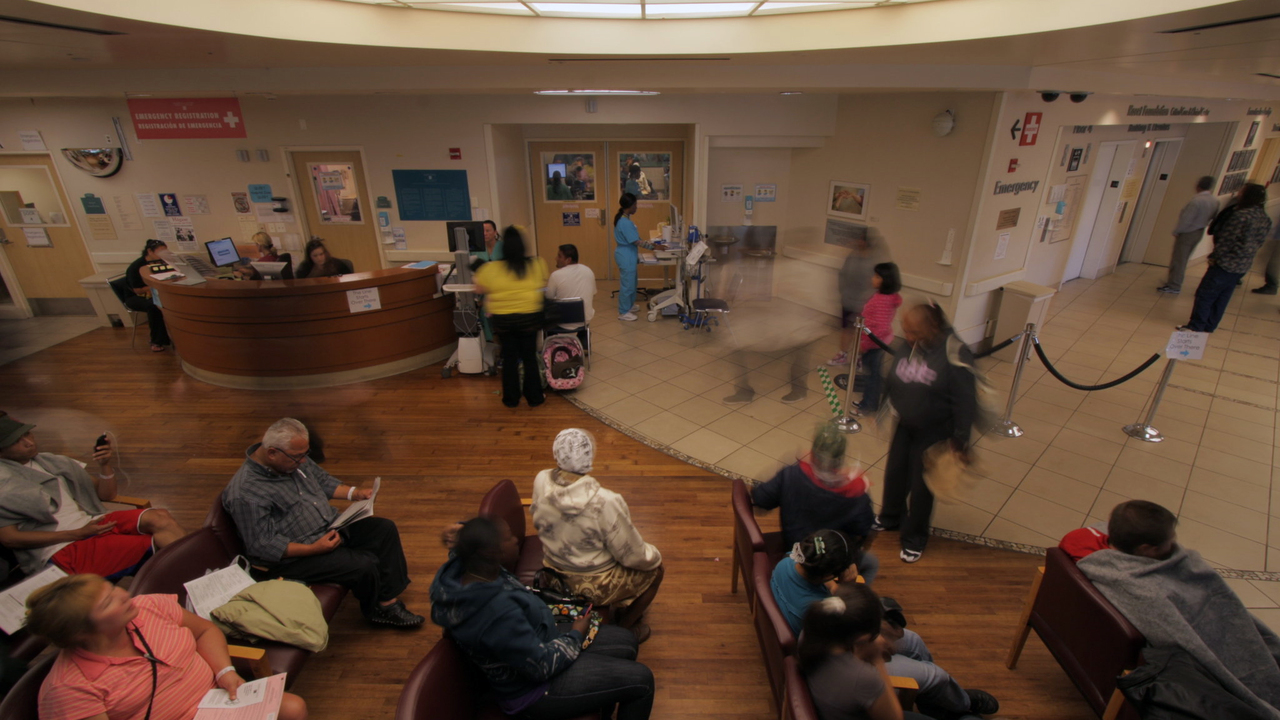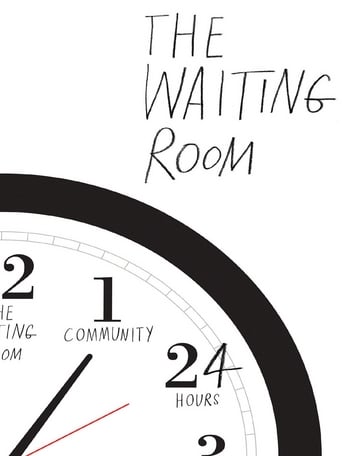

I gave this film a 5/10 for at least showing some of the reasons why US healthcare is such a depressing mess. However, having worked in two of the nation's busiest ERs where everyone is uninsured or on inadequate government aid, this portrait is not realistic. The patients here are understanding of the long waits and passive, the nurses sassy and easy- going, the doctors compassionate and caring. No. This is not real life. In real life, the ER is a dumping ground (as evidenced in this film by the man who expected to receive dialysis in the ER)--violent autistic teenagers, nursing home patients, the addicts, the homeless. Nowhere else for them to go. Walk in patients are sick and afraid and weary of all the buck-passing because they have no insurance. Add to that the long wait times and it's not hard to imagine the rage they feel and the violence that occurs necessitating fleets of security guards. Nurses are overworked, overextended, and sick of being the bullseye for all blame. Docs generally do their best but there are problems with communication, lack of experience and exhaustion. Compassion fatigue is a major problem for anyone who works in a city ER. Patients don't move because of the dearth of other facilities--detox/rehab, long term care and mental heath, eg, not to mention the ever dwindling number of primary care providers. Beds in our ER are regularly taken by alcoholics and addicts "sleeping it off" because it's below zero outside and sending them away is a death sentence, but the sick are kept waiting. Everywhere you turn it's a Catch 22. This film presents a sort of "brave and genial in the face of adversity" attitude that I've never seen; there is more chaos, rage and despair over a healthcare system that will never work in its present incarnation and must be razed and re-created. Sorry for the soapbox.
... View MoreWhat director Peter Nicks captures in The Waiting Room is the truly bare side of real humans with nowhere else to go. The cinema verité style documentary gives the viewer a brief glimpse into the lives and problems of people who find themselves in the ER at an Oakland public hospital in a 24 hour period. What sets this film apart from the other "Sickos" out there is Nicks' refusal to comment on the situation, stripping away the all too subjective narration, info- graphics, and expert commentary, leaving a story as near to objective as one may see. Instead, Nicks requires the viewer to experience the range of emotions that each patient or staff member encounters, and allows them to chose which of these emotions to reflect back on the film. Just as easily as desperation and optimism can encounter a man with $80.00 in his pocket, forced out of work by chronic bone spurs, can a viewer encounter anger and compassion, both at the people and the system which they are caught in.Without a narrator telling the viewer how to see a situation or a person, the events in this film can be entirely polarizing for the viewer. It's easy to see the story of Eric Morgan, who needs surgery to remove a testicular tumor and gets lost in the shuffle of private vs. public health care without insurance, and get angry at a system that has forced him to a public ER with thousands of dollars in medical bills. But, it's not so easy view the chronic substance abusing patient who is taking up a desperately needed hospital bed to recover overnight from a bender, and feel compassion for a man caught in an entirely different broken system.The debate caused by The Waiting Room becomes increasingly more polarized when we add in the feelings and opinions of an international audience viewing this film. As a Canadian, some of the scenes feel as if the patients in a third world ER were slammed in to a space-age medical facility, with the tools and resources to fix everyone, but everything must remain at a stand still until money is exchanged by the hands of grey haired business men elsewhere. Many American reviews feel that this film incites a need to fix a broken American health care system, but from abroad that view seems much too shallow. The people and stories captured by Nicks are the problems of a much larger system which forces its people to rely on Google and God instead of Science and State for help, exasperating the system even further and hog-tying those with skills and desire to help with red tape.However cruel the system may be, what Is left at the end of the ER shift, is an inordinate amount of compassion and kindness possessed by both the staff and patients in the waiting room at the Highlands Hospital in Oakland. As infuriating as it may be, the people in The Waiting Room still inspire optimism in the viewer and in each other. What Nicks allows is for the audience to discover the goodness that remains in people even when they find themselves at the bottom of the barrel.
... View MorePatients and Patience. Real people, America's working poor, waiting and waiting for care in the Emergency Dept. of an urban public hospital, because they have no where else to go. Sounds like a downer, but it's not: The story lines move briskly from one patient to another and back again; you feel you are getting to know the patients and the incredibly hard-working staff, esp. the remarkable personality of Nurse Assistant "CJ" managing the restless and weary crowd out in the waiting room, and the sexy baritone Dr. Doug White back behind the ER doors.There are almost no voice-overs, no Michael Moore telling you what to think. Just real people, warts and all, with their problems, blessings and hope. The debate over health care reform is about whether these people (and most of us are a few paychecks away from BEING these folks) will get access to regular doctor visits, or whether they will spend eternity in The Waiting Room.Highly recommended.
... View More